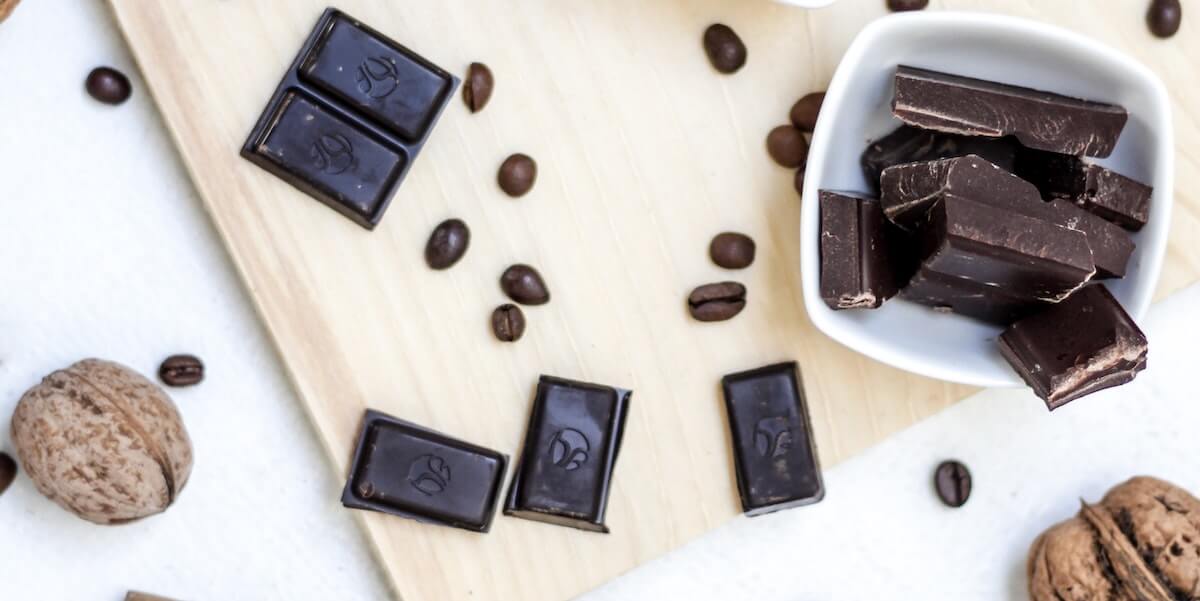Many people have a sweet tooth. It’s almost impossible to not be fond of sweets on some level because humans are biologically designed to crave it. Eating sugar literally gives us a temporary “high”. Consuming sugar causes the release of endorphins, which give us a small buzz and eases our stress for a few moments. But too much sugar is bad for our health, so it’s important to know how to stop sugar cravings. Scroll down to know more about sugar and how you can curb your sweet cravings!
The Different Types of Sugar
The word “sugar” is actually an umbrella term. There are several different types of sugars that we tend to simply call “sugar”, yet these compounds are not all equal in their potential health effects:
Glucose
First, there is glucose. This type of sugar is found naturally in any food that contains carbohydrates. If you’ve ever known a person with diabetes, this is what they need to keep tabs on. Glucose is typically called “blood sugar” among diabetics.
Fructose
Another sugar found quite often in our food (particularly fruits and vegetables) is fructose. While this simple substance isn’t problematic on its own, it gets a bad rep thanks to another sweetener bearing its name. High-fructose corn syrup is arguably the most commonly consumed sugary substance. These are often added to baked goods and other processed treats in the grocery store to make them more appealing to our taste buds. Like its name implies, high-fructose corn syrup consists of corn syrup with added amounts of fructose.
Sucrose
Most people are familiar with sucrose, also known as “table” or “refined” sugar. This is the type of sugar you’ll find in the baking aisle of the grocery store. Sucrose consists of equal quantities of glucose and fructose.

The Difference Between Glucose and Fructose
The difference between glucose and fructose is the way in which they are metabolized by our bodies. Glucose is metabolized by kidneys, liver, and muscle cells, and quickly ”burned” for fuel. Aside from diabetics, excess glucose in the bloodstream isn’t usually a problem, as our bodies quickly use it for energy.
On the other hand, fructose is metabolized by the liver, intestines, and kidneys, where it is ultimately broken down into glucose, fatty acids, and lactate. While the glucose is not harmful, the other two byproducts of fructose metabolism are not necessarily a good thing for our bodies in massive quantities.
Why You Should Avoid Fructose
Avoiding fructose is an important step in knowing how to stop sugar cravings. Fructose is generally metabolized at a much faster rate than our bodies can utilize. The buildup of glucose, fatty acids, and lactate from this process ultimately may become stored as fat if our bodies do not need these compounds.
Fructose has also been found to make it harder to control our appetites. This is due to an increase in ghrelin (the “hunger hormone”) levels combined with limited activation of satiety signals within the brain (1).
In some people, the rapid metabolism of fructose prompts insulin release from the pancreas, which can cause blood sugar spikes followed by low blood sugar.
Guess what happens when our blood sugar drops? We feel tired, can’t concentrate, and have cravings! Since excess fructose can be stored as fat, this can only mean one thing… weight gain! With weight gain, the risk for diabetes, heart disease, and even some cancers are heightened.
Here’s why:
- Frequent sugar spikes in combination with weight gain often lead to the development of insulin resistance, which can ultimately progress to type 2 diabetes.
- Meanwhile, the plaque buildup in arteries due to excessive circulating fatty acids from high fructose consumption is a major risk factor for heart attacks and strokes.
- Being obese or overweight has also been linked to the development of certain types of cancers, such as cancers of the liver, pancreas, breast, and colon. While fructose itself is not a carcinogen, its contribution to obesity indirectly raises cancer risk.
Benefits of Cutting Out Sugar In Your Diet
While it may not sound like fun, cutting out a large amount of sugar from your diet can help you stop sugar cravings and provide you with a wealth of health benefits. Perhaps the biggest benefit is weight stability, courtesy of reduced sugar cravings, and fat accumulation from fructose metabolism.
The longer someone sticks to a reduced-sugar diet, the less they tend to crave it and its familiar “high”.
By limiting your sugar consumption, you’re less likely to keep gaining a few extra pounds each year. The longer someone sticks to a reduced-sugar diet, the less they tend to crave it and its familiar “high”.
Although we often associate eating sugar with being more energetic and hyper, avoiding sugar crashes can keep you from getting hit by fatigue in the middle of a day or feeling sluggish for a few hours after a meal.
When you were a teenager, did your mother ever tell you that eating candy would give you pimples? While it’s not quite that simple, there appears to be a link between sugar and acne.
Excessive fructose consumption can contribute to breakouts and generally blotchy-looking skin. By cutting back on sugar, you can avoid those unsightly sugar breakouts and even reduce the severity of chronic acne.
There’s no doubt that reducing sugar in your diet can be a difficult adjustment. High-fructose corn syrup is all over the grocery store shelves, and the idea of avoiding some of your favorite treats can definitely be challenging. However, it’s not impossible!
How To Stop Sugar Cravings
Here are 7 tips to help you limit your sugar intake. We also give you a couple of natural sugar alternatives that will help you stop craving sugar.
Here are 7 tips to help you limit your sugar intake. We also give you a couple of natural sugar alternatives that will help you stop craving sugar.
Eat three meals a day
Don’t skip meals! Skipping meals can lead to low blood sugar levels. People who skip breakfast or lunch are more likely to end up with cravings and ultimately reach for a sugary treat during the day to get their blood sugar back up.
Avoid soda
Most sodas are packed with high-fructose corn syrup and other questionable ingredients. One 12-ounce can of soda contains as much as 40 grams of sugar, which is equivalent to about 3 tablespoons. Heart-healthy recommendations limit daily sugar consumption to 2 tablespoons for women and 3 tablespoons for men. Do you really want to use up your whole daily sugar budget on a single can of soda?
Reach for fruit when your sweet tooth calls!
Fruit is naturally sweet due to a combination of glucose, fructose, and sucrose. However, the sugar density in fruit is much lower than you’ll find in other sweet treats. And the fiber content in fruit can help to direct any extra sugar your body doesn’t need to your intestines for removal. An added bonus: fruit also contains many important nutrients (such as vitamins, minerals, and antioxidants) that you won’t find in a candy bar, and for far fewer calories!

Avoid highly-processed and reduced-fat foods
Many heavily processed foods contain added sugar to improve the taste. This is especially true for foods labeled “low-fat” or “fat-free”. The fat removed from these foods is typically replaced with sugar to ensure that they still taste good. It’s always a good idea to read the ingredients on any package of pre-prepared or processed food to make sure you know what you’re dealing with.
Read the label!
Some brands try to rename their sugar additives in hopes that people might not catch them when reading the ingredients. A few common names for added sugars to check for include high-fructose corn syrup, refiner’s syrup, sucrose, corn syrup, maize syrup, glucose-fructose syrup, glucose syrup, crystal dextrose, fruit juice concentrate, and corn sweetener (2).
Some of these names can be misleading. For example, sugars from fruit juice or fruit juice concentrate may appear to be a nutritious option. However, the sugar in a piece of fruit comes with other nutrients such as fiber and vitamins, while many of these nutrients are lost when processing fruit into fruit juice. Additionally, fruit juice concentrate simply means that the fruit juice used in these products has been concentrated. So, you will get way more sugar compared to fruit juice or a piece of fruit.
Use a naturally-occurring sugar alternative
One of the most effective ways on how to stop sugar cravings is to use a healthy sugar alternative. Sugar substitutes and artificial sweeteners are often linked to health problems. But the reality is that in order to replicate these side effects, you would need to literally consume hundreds of packets daily. Even though these claims are unfounded, many people are seeking natural alternatives these days.
Luckily, a few of the more popular alternative sugars (particularly stevia and monk fruit) are available at most grocery stores.
Stevia
As you might guess from the name, stevia is extracted from leaves of the stevia plant. It contains zero sugar and is about 250 to 300 times sweeter than sucrose. However, it does tend to have a slightly bitter aftertaste. So, this is certainly something to take into consideration when browsing sweeteners at the store.
Monk fruit
Another natural sweetener that has become more popular recently is monk fruit, a sweetener extracted from the fruit’s juice. This fruit has been used in traditional Chinese medicine to treat colds and aid in digestion. Like stevia, monk fruit sweetener is much sweeter than sucrose (about 150 to 200 times sweeter). As with other fruits, it does contain a small amount of sugar in the form of glucose and fructose. But these sugars are not responsible for the sweet taste. The natural sweetness of monk fruit is owed to mogrosides, which are antioxidants that are ultimately used in the intestines to provide energy to “good” bacteria. So, this sweetener may actually help to improve your gut health (3)!

Still need a little sugar fix? Switch to dark chocolate!
One of the first things people search for when they want to know how to stop sugar cravings is what are they going to eat for sweets? Fortunately, there’s an easy answer. Chocolate is the ultimate “happy” food and many peoples’ favourite indulgence. It’s also one of the 7 foods that happy people eat!
Do you feel like chocolate is inherently “unhealthy” and off-limits for you?
You might just need to make a different choice in the candy aisle. Cocoa beans contain many nutrients that make chocolate a superfood. Chocolate only becomes less nutritious when excess sugar is added to it, which is typically the case with milk chocolate.
Dark chocolate, on the other hand, contains less sugar and more health-promoting nutrients such as flavonoids and magnesium (2). The higher the cocoa percentage in your chocolate, the more nutritious it will be (and dark chocolate may even make you smarter)! Of course, as with every indulgence, even nutrient-packed dark chocolate is pretty calorie-dense, so make sure to enjoy it in moderation.
Conclusion
Reducing your sugar intake can be a challenge in our sugar-saturated world. Although it can feel like an uphill battle, it is possible to stop sugar cravings by cutting out food products containing added sugars.
Thanks to natural sweeteners and naturally sweet fruits, you don’t have to sacrifice the joy of feeding your sweet tooth. In fact, the only things you have to lose from cutting back on sugar are some potential chronic health conditions and maybe even a few pounds!
References
(1) Lowette, Katrien et al. “Effects of high-fructose diets on central appetite signaling and cognitive function.” Frontiers in nutrition vol. 2 5. 4 Mar. 2015, doi:10.3389/fnut.2015.00005
(2) Dolson, L. (2014, December 19). How to Spot Hidden Sugar in Foods. Retrieved January 18, 2016, from Gary, T. (2011, April 13). Is Sugar Toxic? The New York Times.
(3) Anthony, M. Ph.D.(2012, December 3). Understanding Monk Fruit: The Next Generation Natural Sweetener.
(4) Bruso, J. (2013, December 18). The Health Benefits of Dark Vs. Milk Chocolate.






